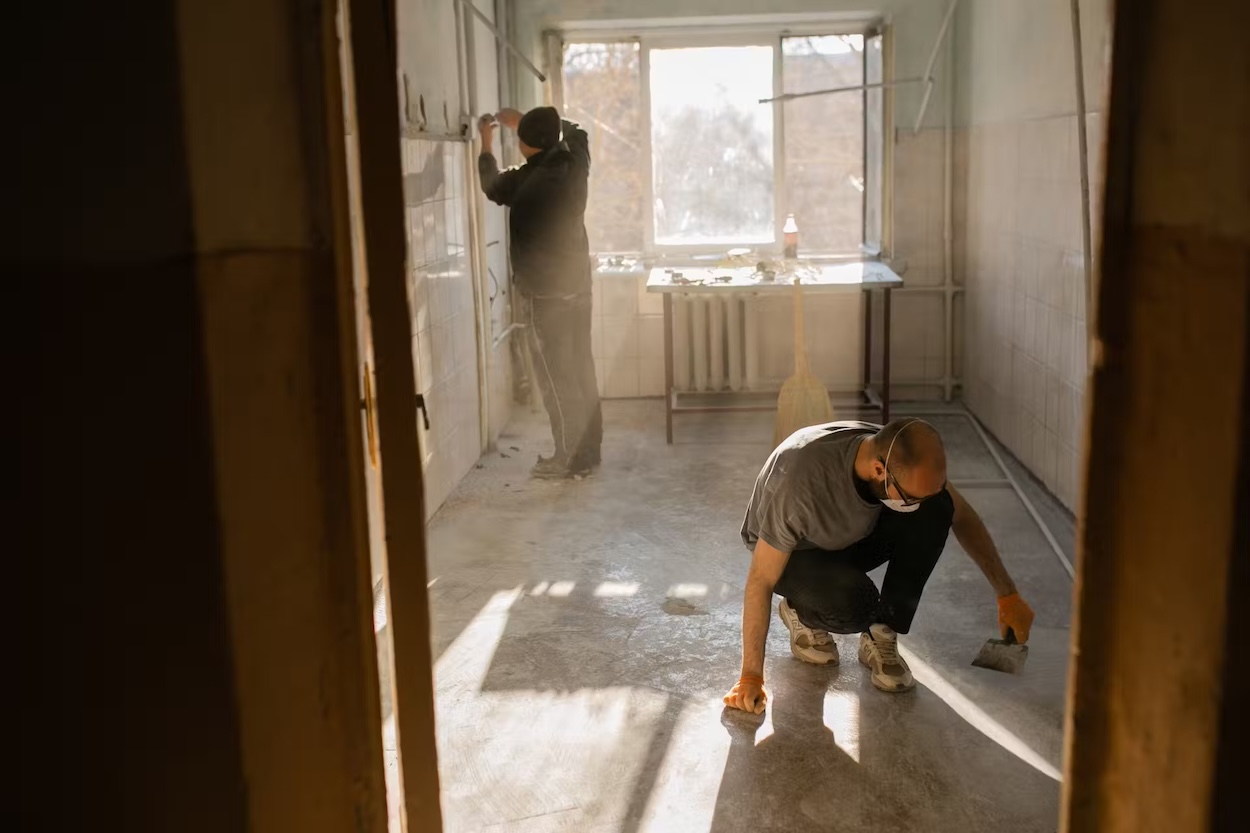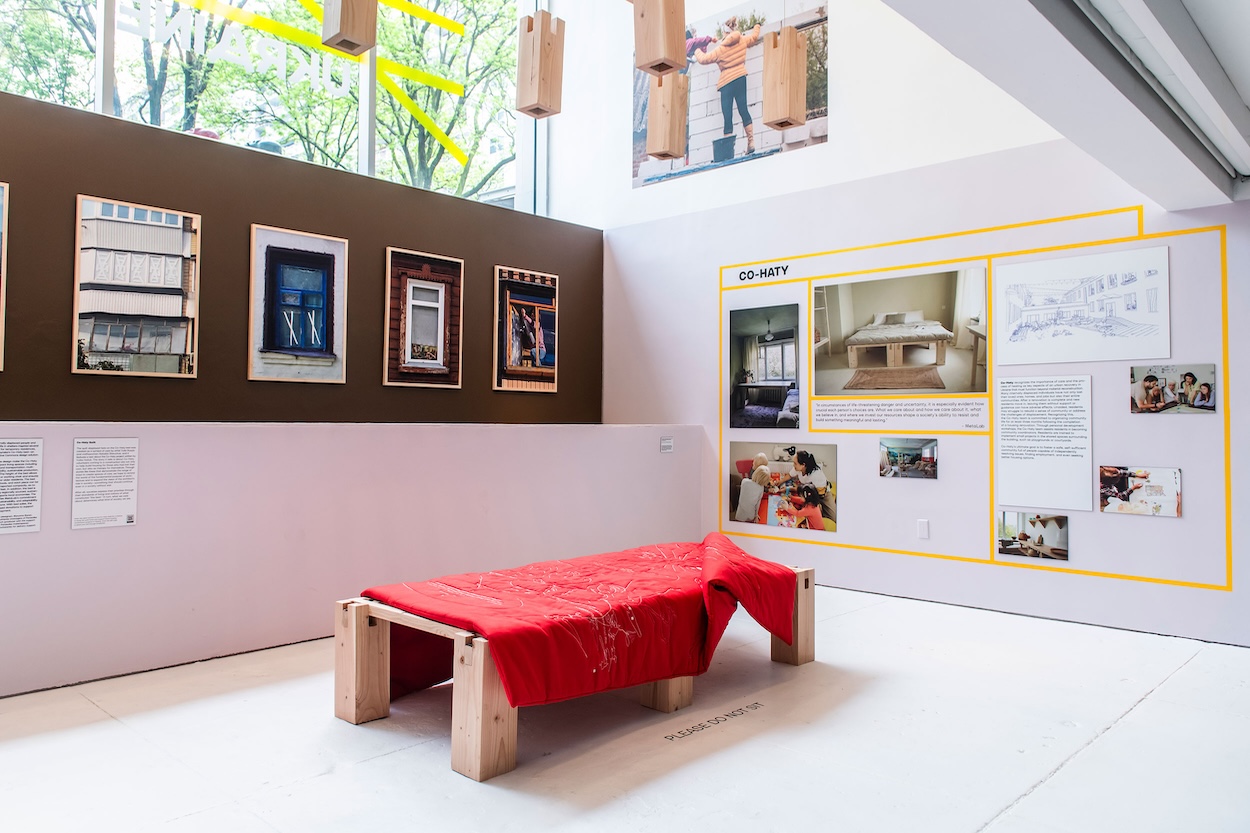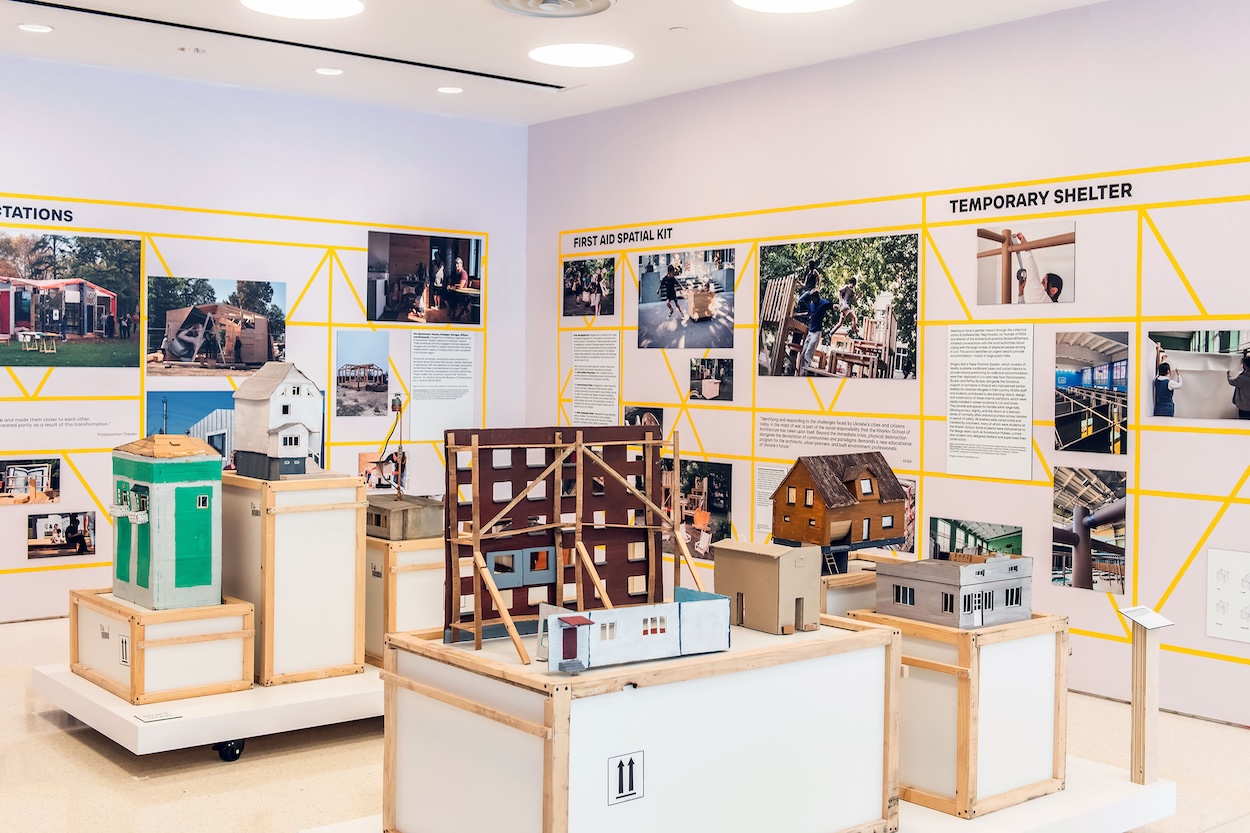It’s difficult to grasp the full extent of devastation unfolding in Ukraine, even as Russia’s full-scale invasion of the country pushes into its third year. A recent New York Times investigation revealed that a staggering 210,000 buildings—including 106 hospitals, 109 churches, and 708 schools—have been damaged or destroyed by Russian offenses, and that only represents regions where data is readily available. Despite the ongoing threats against Ukrainians’ lives, ecology, and culture, civilians haven’t lost hope. A rising generation is reimagining ideals of home and employing design thinking to support grassroots reconstruction efforts as an act of resilience, even as their future remains uncertain.
More than a dozen examples are brought to light in “Constructing Hope: Ukraine,” an exhibition at the Center for Architecture in Manhattan. They range in scale from modular furniture and housing for internally displaced people to detailed documentation of destroyed buildings. MetaLab, a Ukrainian NGO that provides affordable housing and community workshops, is spearheading an initiative called Co-Haty that converts unused buildings into homes for the displaced and provides modular, ready-to-assemble wooden beds. “In circumstances of life-threatening danger and uncertainty, it’s especially evident how crucial each persons’s choices are,” MetaLab states on an exhibition placard that accompanies a bed prototype. “What we care about and how we care about it, what we believe in, and where we invest our resources shape a society’s ability to resist and build something meaningful and lasting.”



